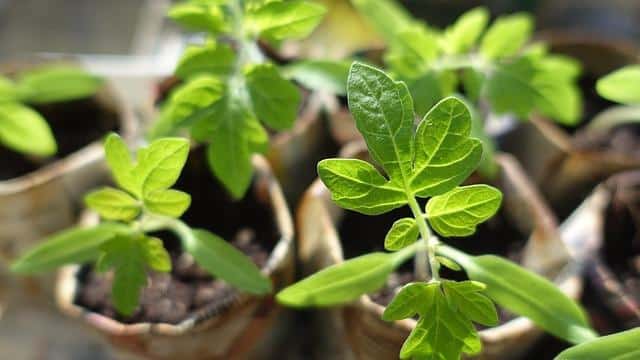[ad_1]
Is it spring yet?! As the days stretch out longer, and temperatures become increasingly mild, we start to feel the tug of the garden.
Many areas are still experiencing frost in March, but most of us can start planting seeds. Whether or not you can go ahead and start seeds depends on a number of factors, including your hardiness zone, your last frost date, which seeds you aim to plant, and whether you intend to start your seeds indoors or out.
Determine Your Last Frost Date
Your last frost date is important. It will help determine when to plant your various seeds. While information specific to our hardiness zones gives us a rough idea of our last frost date, it’s best to use an interactive calculator, like this one at The Old Farmer’s Almanac for a more exact date.
Sort Your Seeds
There are basically three types of seeds: 1) those best sowed directly into your garden; 2) those that can be sowed directly or started indoors; and, 3) those that most people should start indoors. Start by sorting your seeds into these three groups.
Seeds to Sow Directly
For a variety of reasons, some seeds do best when sowed directly into the ground. Some don’t transplant well. Others are cool-weather crops that can handle light frost and flourish in cooler temperatures.
Need Non-GMO Seeds? Get Them From A Company You Can Trust!
If you have any of the seeds listed below, pull them out and put them aside:
- Beans
- Beets
- Dill
- Carrots
- Cilantro
- Corn
- Onions
- Parsnips
- Peas
- Potatoes
- Radishes
- Rutabaga
- Turnips
- Leafy greens, including lettuces, arugula, kale, spinach, collard greens, mustard greens, chard
15 Seeds That Should Be Started In March
Some seeds must be started indoors in most parts of the country — otherwise their fruit may not come to maturity before fall frosts. If you have any of the seeds listed below, pull them out and make a second pile:
1. Basil
2. Broccoli
3. Cauliflower
4. Celery
5. Eggplant
6. Kohlrabi
7. Mint
8. Oregano
9. Peppers
10. Tomatoes
Seeds That Can Be Started Indoors or Out
While some seeds do perfectly fine when sowed directly into your garden, you also can start them indoors in order to get a jump on the growing season. It’s great to be able to enjoy some vegetables earlier in the summer. Plus, you also can stagger your planting by putting out transplants at the same time as directly sowing seeds of the same variety, so that your harvest lasts for several weeks.
The All-Natural Fertilizer That Doubles Your Garden Yield!
On the flip side, it can get daunting to find enough space, lighting, and time to look after large numbers of seedlings. Plus, don’t forget that you’ll need to haul your seed flats in and out for a little while, too, to harden off your seedlings before transplanting. Consider how many seedlings you must start indoors, plus the pros and cons listed, in order to decide whether to start any of these seeds indoors, too:
11. Cabbage
12. Cucumbers
13. Melons
14. Parsley
15. Squash – summer and winter, including zucchini
Determine Planting Dates for Indoor Seeds
Now that you know which seeds to start indoors, the next step is figuring out when to do it. Using the information on the seed packages, count backward from your last frost date to determine when to start your seeds. For example, some vegetables, such as broccoli, should be started 10 weeks prior to the last frost date. Cherry tomatoes should be started nine weeks prior, and full-size tomatoes eight weeks prior.
Have you started seeds indoors yet? When do you start them? Share your gardening and growing tips in the section below:
[ad_2]
Source link
Get more stuff like this
in your inbox
Don't Be Left Unprepared
Thank you for subscribing.
Something went wrong.





